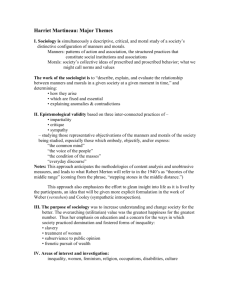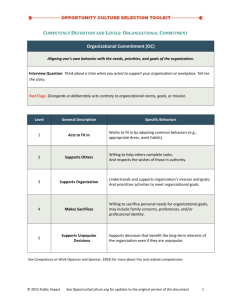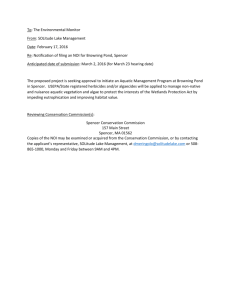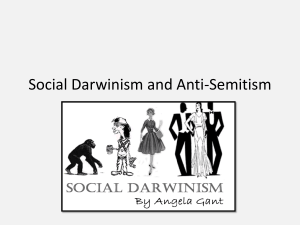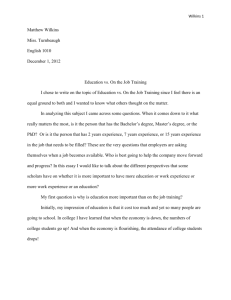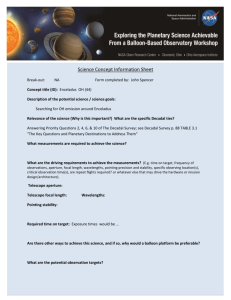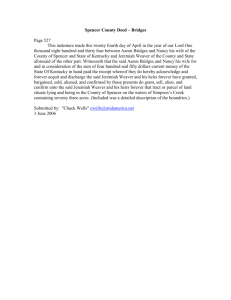Herbert Spencer
advertisement
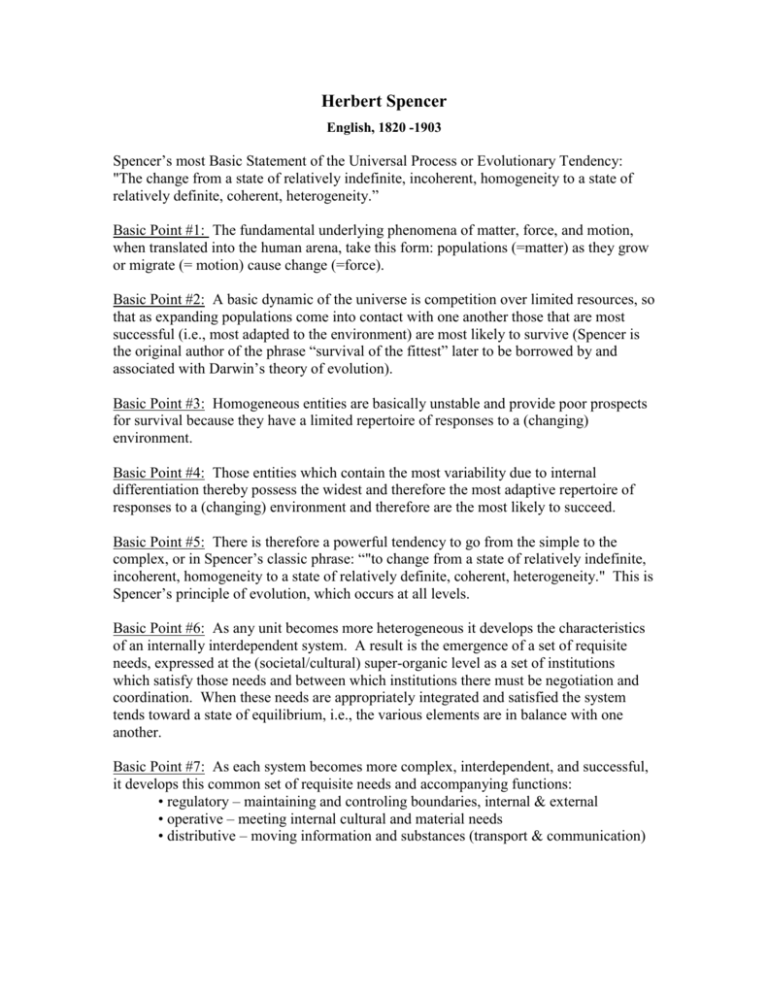
Herbert Spencer English, 1820 -1903 Spencer’s most Basic Statement of the Universal Process or Evolutionary Tendency: "The change from a state of relatively indefinite, incoherent, homogeneity to a state of relatively definite, coherent, heterogeneity.” Basic Point #1: The fundamental underlying phenomena of matter, force, and motion, when translated into the human arena, take this form: populations (=matter) as they grow or migrate (= motion) cause change (=force). Basic Point #2: A basic dynamic of the universe is competition over limited resources, so that as expanding populations come into contact with one another those that are most successful (i.e., most adapted to the environment) are most likely to survive (Spencer is the original author of the phrase “survival of the fittest” later to be borrowed by and associated with Darwin’s theory of evolution). Basic Point #3: Homogeneous entities are basically unstable and provide poor prospects for survival because they have a limited repertoire of responses to a (changing) environment. Basic Point #4: Those entities which contain the most variability due to internal differentiation thereby possess the widest and therefore the most adaptive repertoire of responses to a (changing) environment and therefore are the most likely to succeed. Basic Point #5: There is therefore a powerful tendency to go from the simple to the complex, or in Spencer’s classic phrase: “"to change from a state of relatively indefinite, incoherent, homogeneity to a state of relatively definite, coherent, heterogeneity." This is Spencer’s principle of evolution, which occurs at all levels. Basic Point #6: As any unit becomes more heterogeneous it develops the characteristics of an internally interdependent system. A result is the emergence of a set of requisite needs, expressed at the (societal/cultural) super-organic level as a set of institutions which satisfy those needs and between which institutions there must be negotiation and coordination. When these needs are appropriately integrated and satisfied the system tends toward a state of equilibrium, i.e., the various elements are in balance with one another. Basic Point #7: As each system becomes more complex, interdependent, and successful, it develops this common set of requisite needs and accompanying functions: • regulatory – maintaining and controling boundaries, internal & external • operative – meeting internal cultural and material needs • distributive – moving information and substances (transport & communication) Basic Point #8: At the super-organic level, the one that we are concerned with in the social sciences (society and culture) this evolutionary heterogeneity of necessity first occurs in at the integrative/regulatory level, and subsequently at the operative and distributive levels. Basic Point #9: “The evolution of society is, therefore, the story of increasing structural complexity and survivability” (Allan, p. 35). As structures become more complex, they differentiate—and as they differentiate they become more segmented and specialized. There results a multiplication of effects, each specialized segment replicating functions of the others. This produces problems of coordination and control which are increasingly resolved through a tendency toward centralization. Basic Point #10: Again, historically, this tendency toward centralization first finds expression in militaristic (authoritarian) regulation and subsequently (evolutionarily) to industrial (voluntaristic, even libertarian) regulation (i.e., that system regulates best which regulates least!). Here is his Law of Equal Freedom: "Every man has freedom to do all that he wills, provided he infringes not the equal freedom of any other man." Basic Point #11: This differentiation and specialization finds expression in the form of social institutions, which have the following characteristics: • they are collective solutions to survival needs that spell out meanings, legitimations, and scripts for individual behavior; • they are not reducible or alterable by individual actions or agency; • they are not subjectively available, i.e., they are historically embedded; • they are wrapped in morality, providing a conviction of rightness and moral energy. Basic Point #12: There are four major types of institutions: • Domestic (family, marriage, kinship) • Ceremonial • Political • Ecclesiastical Spencer is concerned with the evolution of each of these types of institutions. • the theory of the evolution of marriage, from promiscuity to plural marriage, to monogamy; • the theory of the evolution of ceremonies, from simple emotion to partially symbolic to intentionally and arbitrarily/manipulatively symbolic; • the theory of the evolution of political authority, based on strength and age (and implicitly on sex), from despotism to oligarchy to democracy; • the theory of the evolution of religion, from ghost-propitiation to ancestor worship to multiple gods to monotheism. Harriet Martineau: Major Themes I. Sociology is simultaneously a descriptive, critical, and moral study of a society’s distinctive configuration of manners and morals. Manners: patterns of action and association, the structured practices that constitute social institutions and associations Morals: society’s collective ideas of prescribed and proscribed behavior; what we might call norms and values The work of the sociologist is to “describe, explain, and evaluate the relationship between manners and morals in a given society at a given moment in time,” and determining: • how they arise • which are fixed and essential • explaining anomalies & contradictions II. Epistemological validity based on three inter-connected practices of – • impartiality • critique • sympathy – studying those representative objectivations of the manners and morals of the society being studied, especially those which embody, objectify, and/or express: “the common mind” “the voice of the people” “the condition of the masses” “everyday discourse” Notes: This approach anticipates the methodologies of content analysis and unobtrusive measures, and leads to what Robert Merton will refer to in the 1940’s as “theories of the middle range” (coming from the phrase, “stepping stones in the middle distance.”) This approach also emphasizes the effort to glean insight into life as it is lived by the participants, an idea that will be given more explicit formulation in the work of Weber (verstehen) and Cooley (sympathetic introspection). III. The purpose of sociology was to increase understanding and change society for the better. The overarching (utilitarian) value was the greatest happiness for the greatest number. Thus her emphasis on education and a concern for the ways in which society practiced domination and fostered forms of inequality: • slavery • treatment of women • subservience to public opinion • frenetic pursuit of wealth IV. Areas of interest and investigation: inequality, women, feminism, religion, occupations, disabilities, culture
